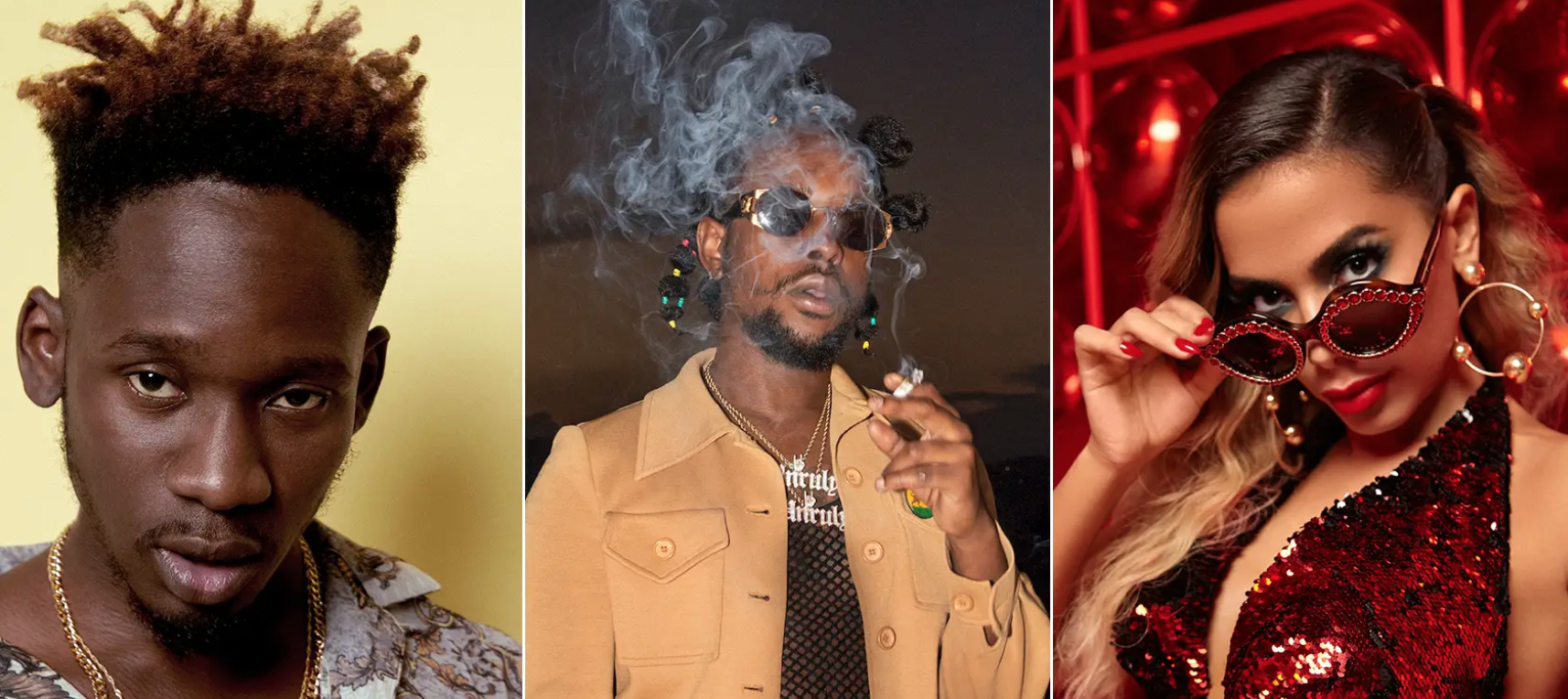In October, I spoke to Rolling Stone (always wanted to say that!) about how, in their words, “reggaeton, dancehall, baile funk, afrobeats and other diasporic styles are mixing faster than ever — without much help from the U.S. music industry.” The topic has been a sustained thesis on this blog and in my work, of course, so I was happy to talk to Elias Leight about the phenomenon, especially its historical dimensions.
Leight’s article shines light on a number of contemporary intersections in this vein while framing them against the long view, especially with regard to the question of whether we’ve entered a new, internet-abetted era of diasporic interaction. Of course, I had to connect some of my favorite dots (and “dotted” rhythms). As the article opens–
Popular musical rhythms are always skipping and skittering back and forth between Africa and its diasporic communities, from Jamaica to Brazil to Colombia and elsewhere. “That’s a process that’s been going on for a long, long time,” says musicologist Wayne Marshall, who teaches at Berklee College of Music. “What was called, for a while, Congolese rumba and then evolves into soukous — the reason it’s called rumba is because it’s [based on] Cuban son records that became popular in the Congo. It’s circular: The son doesn’t exist without that African musical heritage in the first place.”
But in recent years, the musical conversations appear to be evolving more rapidly. “YouTube in particular has intensified and accelerated that process,” Marshall says.
That’s “nu whirled music” for ya, especially in an age when we bear witness to yet another iteration of this Afro-Atlantic exchange (and indeed, I could have noted that the African heritage that informs son cubano is, more specifically, deeply Congolese!). For more context, contemporary and historical, read the rest –>
Elias Leight, “One Planet Under a Groove,” Rolling Stone, 17 October 2018.
Continuing the query into historical patterns of “borrowing” and exchange, I think it’s right for Light to raise the specter of cultural appropriation in the article. Many of the artists more involved in “lateral” Afrodiasporic circulation — i.e., between Brazil and the Dominican Republic, or Jamaica and Ghana, Angola and Oriente — are “structurally” disadvantaged when it comes to exploiting their productions in the global music industry to the same degree as their North American and European counterparts. Wizkid might get sampled on a Drake track and Janet Jackson can stay fresh with an afrobeats-inflected single, but we’ve yet to see a true paradigm shift where such (extractive?) gestures are enough to open up the stage. Shakira had the best selling reggaeton single of the century before Bieber helped Fonsi take the crown. Drake and Rihanna can’t help but eat Jamaica’s food, their heartfelt homages notwithstanding.
As the article does a good job reminding, there’s a lot more out there to listen for — and a lot more that people are listening to. These “lateral” movements across the diaspora can have resounding, inspiring effects everywhere. This was true in the days when recordings could more easily cross borders than people, and it’s as true as ever in the age of increasingly centralized online platforms (YouTube, Spotify) and a vast, diverse world of producers and participants with growing access and power. We’re not there yet but I still get the sense that the wave of the future, as far as global pop, is going to be a tide all its own, on its own terms, rolling along in its own way. We’ve been watching the ripples for a while, and they’re getting bigger and bigger: take, say, the remarkable dominance of Spanish-language bangers among all YouTube uploads in 2018. (Bigup to Elias for that article too! Can’t stop sharing it with students and colleagues.) Indeed, as Eddie Cepeda argues in Pitchfork this week, we might recognize that the sea change is underway and we’re already swimming in new waters. Latin pop is American pop is Afrodiasporic pop is global pop, and if that wasn’t always the case, it’s becoming harder and harder to deny.
At the end of 2018, I’ll leave it at this: what better represents this turn (and this blog — shoutout to ol’ rabbit holes!) than a 20-year-old slice of petróleo crudo by Cutty Ranks and El Chombo proving its enduring resonance (and/or prescience) by garnering nearly a billion views in a little over 6 months?! Talk about ahead of the curve. And while I can’t resist punning on the old Panamanian name for proto-reggaeton — i.e., petróleo — I really love that this track is sweeping the world this year unadulterated and un-remixed (if not unaccompanied). It’s as raw (and refined!) as it was in the first place, way back when it introduced Cuentos de la Cripta 2 in 1998.
Cutty may mean a lot of things when he says “Dame tu cosita” (or not), and while the music industry is not the first that comes to mind, suddenly I can hear it that way too. Here’s to even bigger cosas, y olas, in 2019–


“a vast, diverse world of producers and participants with growing access and power. We’re not there yet but I still get the sense that the wave of the future”
I feel this. Reading Leight’s piece, I can’t help but think that there needs to even be a shift away from gazing at this from the top down, as it were. I appreciate your pointing to some of those structural inequalities.
Next up, the cover!